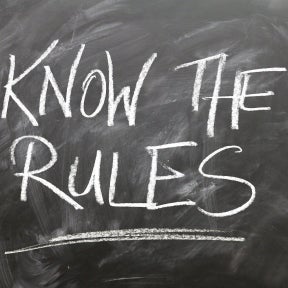How to Deal with Insubordination in the Workplace:

Discover the best strategies for identifying, preventing, and dealing with insubordination in the workplace.
Recognize workplace insubordination.
Understand what insubordination is.

Insubordination is often confused with misconduct or insolence. Insolence occurs when an employee mocks, insults, disrespects, or shows similar inappropriate behavior toward a manager or supervisor. Misconduct occurs when employee behavior is criminal, harassing, or unethical. This behavior is often outlined in a code of conduct.
Insubordination may be accompanied by misconduct or insolence, but these terms are not interchangeable.
Identify workplace insubordination.

Insubordination can take many forms in the workplace, which sometimes makes it tricky to identify. In simple terms, insubordination refers to any instance when an employer or manager gives an instruction, and the employee acknowledges that instruction, but doesn't complete the task.
Disrespectful remarks and gestures, as well as other insolent behavior, may accompany insubordination, but this isn't always the case. Refusing to carry out the duties outlined in a contract or neglecting to log time spent on a task, can be deemed acts of insubordination.
Communicate clearly and professionally.
Let employees know their conduct is unacceptable.

Don't leave any room for doubt or misunderstandings. When insubordination occurs, clearly state that this type of behavior is unacceptable and against company policy.
Insubordinate behavior can feel disrespectful and even intimidating. Don't be tempted to respond with similar behavior. Stay calm. If things become heated, remove yourself from the situation and continue the conversation once all parties have regained composure.
If there are other coworkers around it may not be prudent to address the insubordinate behavior in this setting. That said, be sure to follow up sooner rather than later.
Try to understand the problem.

Schedule a meeting immediately after the incident, with a third-party HR representative, if possible. Try to understand what led to the behavior from the employee's point of view, and determine whether the issue can be resolved, or if it was just a simple misunderstanding.
Give all parties a chance to speak during the meeting and make sure everyone feels heard.
Develop a plan to avoid future problems.
Keep the communication channels open.

When you have an open and understanding relationship with employees, you'll be able to identify minor problems before they turn into instances of insubordination. Insubordination may stem from unchecked miscommunication, so make a point of listening to your employees.
While face-to-face meetings are great, encourage regular communication between employees and their superiors via other channels. Don't wait until the weekly team meeting to clear the air; misunderstandings may snowball if they aren't promptly addressed.
Explain the consequences of additional infractions.

Explain what the employee handbook says regarding insubordination, and what the consequences are, including disciplinary action and termination.
Officially document the incident.

Document the incident with an official write-up form. Include a factual description of the incident, along with a plan for improvement and the consequences for additional infractions. Have the employee or a witness sign it. Sign it yourself as well.
Follow through on your plans.

Work with the employee to improve behavior and communication and, if necessary, to take the next steps you've outlined if the behavior does not improve.
Failure to follow through on outlined plans and procedures may cause employees to lose faith in you, so make this a priority.
Implement preventative measures.
Develop clear company policies on insubordination.

Be sure to define insubordination in your company policy and to outline the consequences thereof. Make sure all employees understand what insubordination is and that they're aware of the repercussions.
Establish boundaries.

Be sure to set boundaries when hiring new employees so that they know what's expected of them and so that they're familiar with how to conduct themselves around senior staff and other colleagues.
Creating boundaries where there weren't any before can be tricky, especially with colleagues who have set patterns. Clear structure and communication will help.
Check insubordinate behavior early on.

Insubordination can grow unrestrained if ignored, so be sure to identify and address instances of insubordination as soon as they arise. Start with gentle reminders, and increase the severity of the punishment if the unfavorable behavior does not cease. Understanding the ramifications of insubordination may prevent workers from becoming insubordinate.
Implement incentives to boost morale.

Employees who feel valued are less likely to sow dissent or create workplace turmoil, so establish employee reward and recognition programs and incentive pay to reward good work and show your appreciation.
What are the effects of workplace insubordination?
Employees who refuse to carry out required duties will have a negative effect on the workplace, and ultimately cost the business time and money. Listed below are some of the consequences of insubordination.
Lower production rates.
Staff who do not fulfill their responsibilities will lower the overall production of a business or organization. Unchecked insubordination can result in costly terminations and high turnover rates.An unhealthy workplace.
An insubordinate employee can make other colleagues miserable, too. When a worker does not complete the required tasks, other team members may need to do additional work, resulting in increased stress and lower morale. Disgruntled workers are less likely to collaborate or to grow.Loss of clients.
An employee who refuses to cooperate with management may deliver poor quality products or provide bad customer service, both of which can turn loyal customers away. A client who has had a bad experience with a company is less likely to recommend them, thereby costing you potential clients as well.Workplace conflict.
Insubordinate employees are often the instigators of various workplace conflicts. Uncooperative staff members create an imbalance that could cause agitation or anxiety amongst workers.Brand damage.
An insubordinate employee may spread rumors, leak confidential information, or make harmful statements about your brand. Fixing your reputation—especially when bad reviews and libelous comments are made on platforms where they cannot be removed—can be a difficult and costly task.



